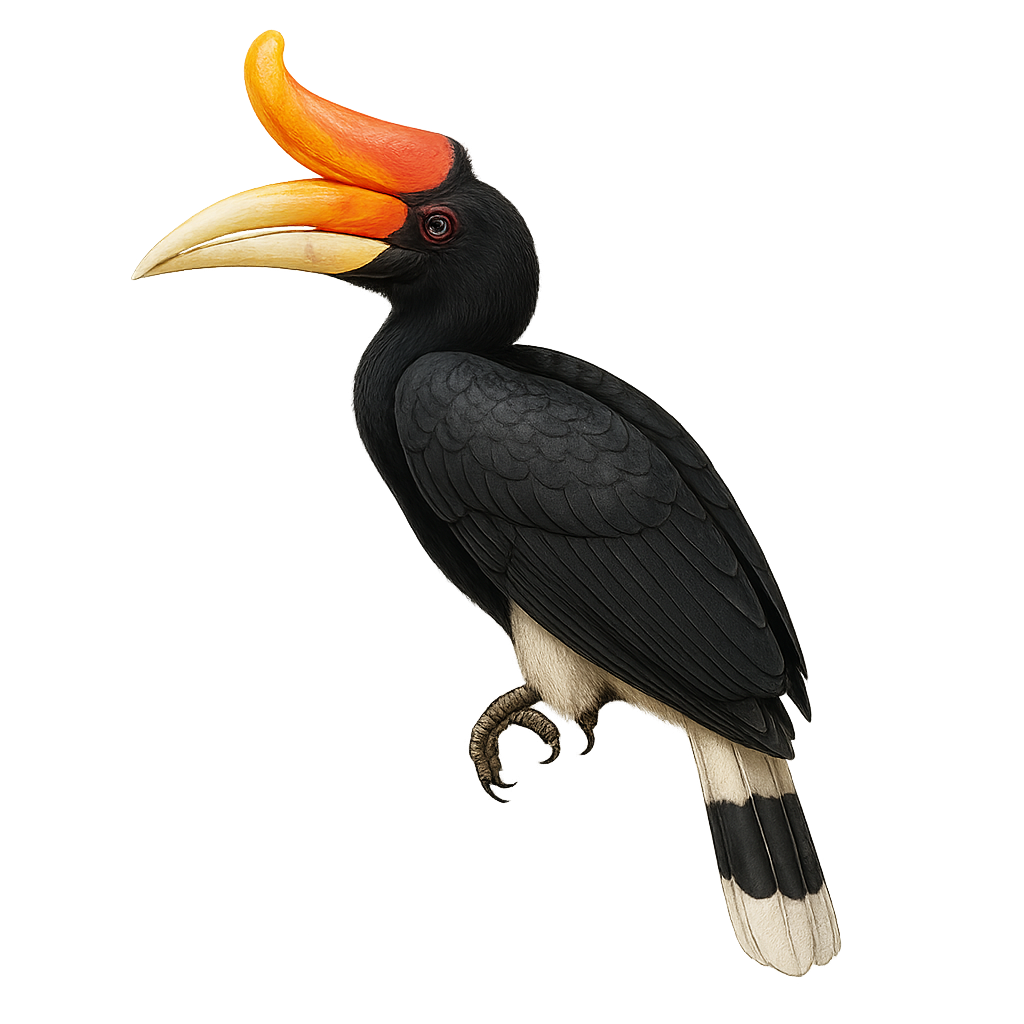Your wildlife photography guide.
Explore the rhinoceros hornbill in detail, study its behavior, prepare your shots.
Where to observe and photograph the rhinoceros hornbill in the wild
Learn where and when to spot the rhinoceros hornbill in the wild, how to identify the species based on distinctive features, and what natural environments it inhabits. The WildlifePhotographer app offers tailored photography tips that reflect the rhinoceros hornbill’s behavior, helping you capture better wildlife images. Explore the full species profile for key information including description, habitat, active periods, and approach techniques.
Rhinoceros Hornbill
Scientific name: Buceros rhinoceros

IUCN Status: Near Threatened
Family: BUCEROTIDAE
Group: Birds
Sensitivity to human approach: Suspicious
Minimum approach distance: 10 m
Courtship display: January to April
Incubation: 37-40 jours
Hatchings: February to June
Habitat:
Tropical forests, mangroves, lowland forests
Activity period :
Primarily active during the day, with peak activity in the morning and late afternoon.
Identification and description:
The Rhinoceros Hornbill, or Buceros rhinoceros, is an impressive bird known for its size and distinctive appearance. It is easily recognizable by its prominent horn-shaped casque, which gives it its name. This casque, although large, is hollow and lightweight. The bird's plumage is primarily black, with white feathers on the tail and white markings on the wings. Its eyes are surrounded by brightly colored bare skin, often red or orange. The Rhinoceros Hornbill inhabits the tropical forests of Southeast Asia, particularly in Malaysia, Thailand, and Sumatra. It plays a crucial role in its ecosystem as a seed disperser, aiding in forest regeneration.
Recommended lens:
400 mm – adjust based on distance, desired framing (portrait or habitat), and approach conditions.
Photography tips:
To photograph the Rhinoceros Hornbill, it is advisable to use a telephoto lens of at least 400mm to capture detailed images without disturbing the bird. Look for a spot where you can observe these birds without disturbing them, such as a watering hole or fruiting tree. Be patient and wait for the bird to perch or feed. The natural light of the morning or afternoon is ideal for capturing vibrant colors and sharp details. Remember to use a tripod to stabilize your camera and avoid motion blur.
The WildlifePhotographer App is coming soon!
Be the first to explore the best nature spots, track rutting seasons, log your observations, and observe more wildlife.
Already 1 431 wildlife lovers subscribed worldwide

